Go beyond the scoreboard
Get the latest on L.A.'s teams in the daily Sports Report newsletter.
You may occasionally receive promotional content from the Los Angeles Times.
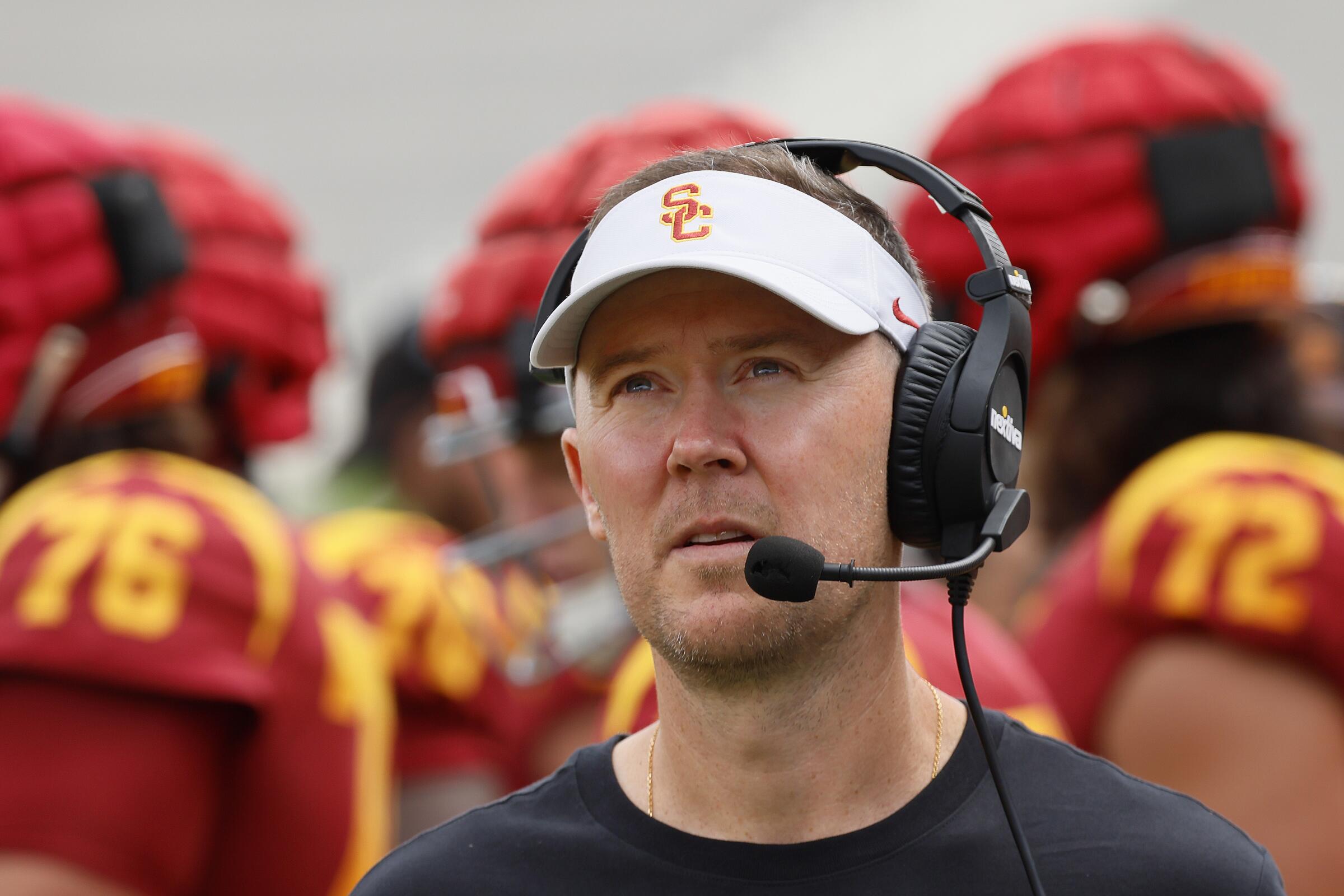
The phone call in November only lasted about 30 minutes. But Lincoln Riley knew as soon as he hung up that he’d found his new defensive coordinator.
The fit with D’Anton Lynn, as Riley describes it now, was just that seamless from the start. The two coaches were so aligned on football philosophy that they “kind of finished each other’s sentences,” Riley said. And when it came to turning around a troubled defense in a hurry, Lynn had firsthand experience, having engineered a transformation across town.
On paper, it felt like a perfect match. But in practice, there are questions still to be answered about USC and its new defensive direction.
That process begins Friday, as USC opens preseason camp feeling optimistic about where its defense is heading. Considering where it ended last season — 121st in points allowed, 119th in yards per game — Lynn has his work cut out for him.
USC coach Lincoln Riley said the Trojans have improved in every area and the suggestion the team won’t compete in the Big Ten is uninformed.
But Riley was sure, from that first call, that Lynn could make an immediate impact on that end. When he was asked last week what a successful season would look like for Lynn and the defense, Riley said he expects “a big jump”.
“I want it to look and feel and I want us to play a lot different,” Riley said. “You have in your mind that this is what we have, this is what we feel like the level we can play at and are we playing to a level that’s that or close to that and doing it consistently?”
That’s just the beginning of questions facing USC as it opens its fall camp. Here are a few more to be answered in the coming weeks.
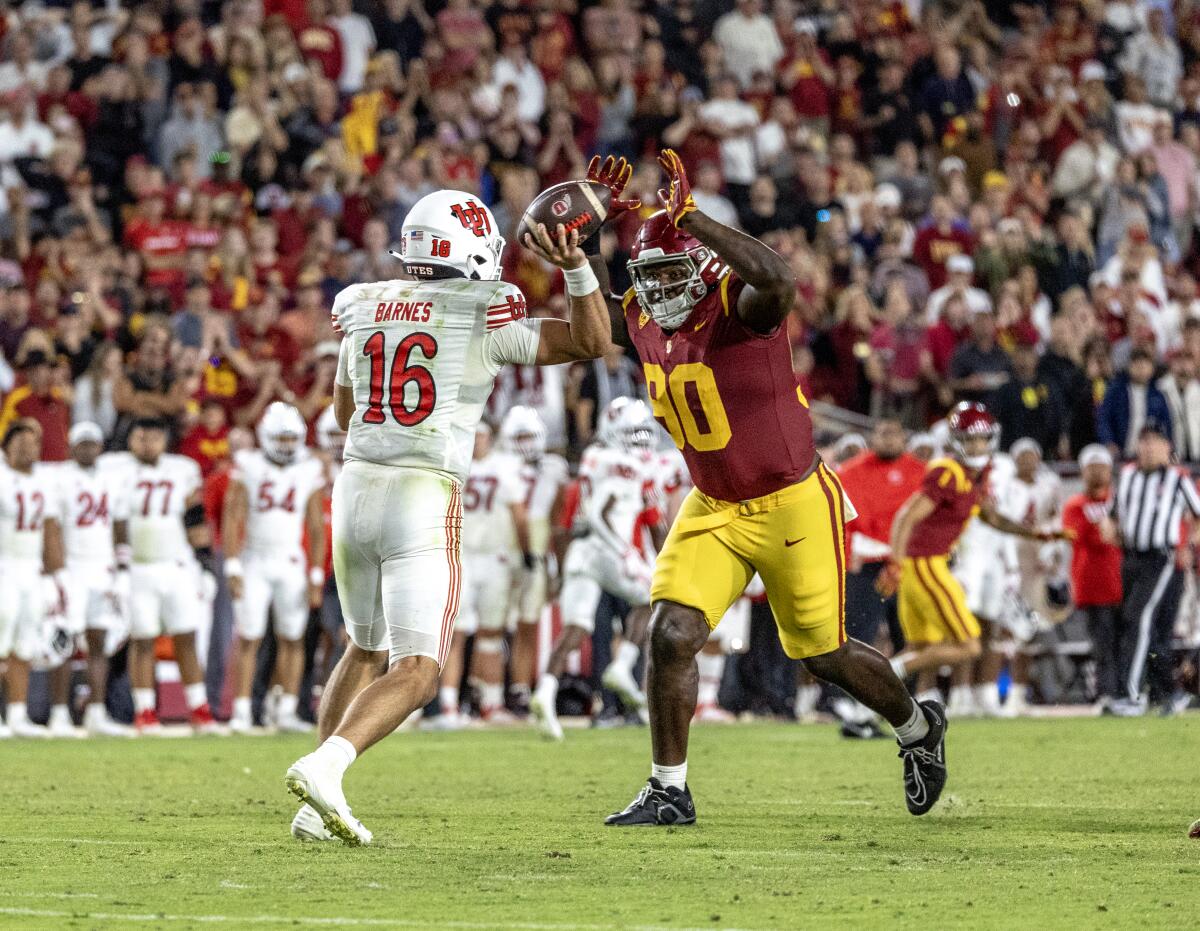
The question was posed multiple times last week by other teams’ beat writers at Big Ten media days, with varying levels of patronizing tone. But the question, at its core, was this: Is USC really tough enough to hang in the Big Ten?
It certainly wasn’t last year, when its defense missed almost 11 tackles each week and ranked 119th in rush yards allowed per game. That won’t fly in its new conference, where teams like Michigan or Penn State will be content to use their rushing attacks to grind down the Trojans.
There’s a reason USC focused on bulking up this summer, after two years of trying to be leaner and faster to fit former coordinator Alex Grinch’s “Speed D” concepts. At USC, the results have been especially noticeable along the defensive line.
“It was turning 285-pound bodies into guys that are now 310,” Riley said. “We’re talking big jumps.”
Whether those jumps prove to be enough on defense is another question. Aside from defensive tackle Bear Alexander, USC doesn’t have an obvious game-wrecker along its defensive front. Nor does it have much in the way of proven pass rushing talent.
That’s not to say either can’t emerge. A change in scheme could go a long way in that regard. But more than likely, USC will spend all season wondering if its defensive front can withstand a Big Ten onslaught.
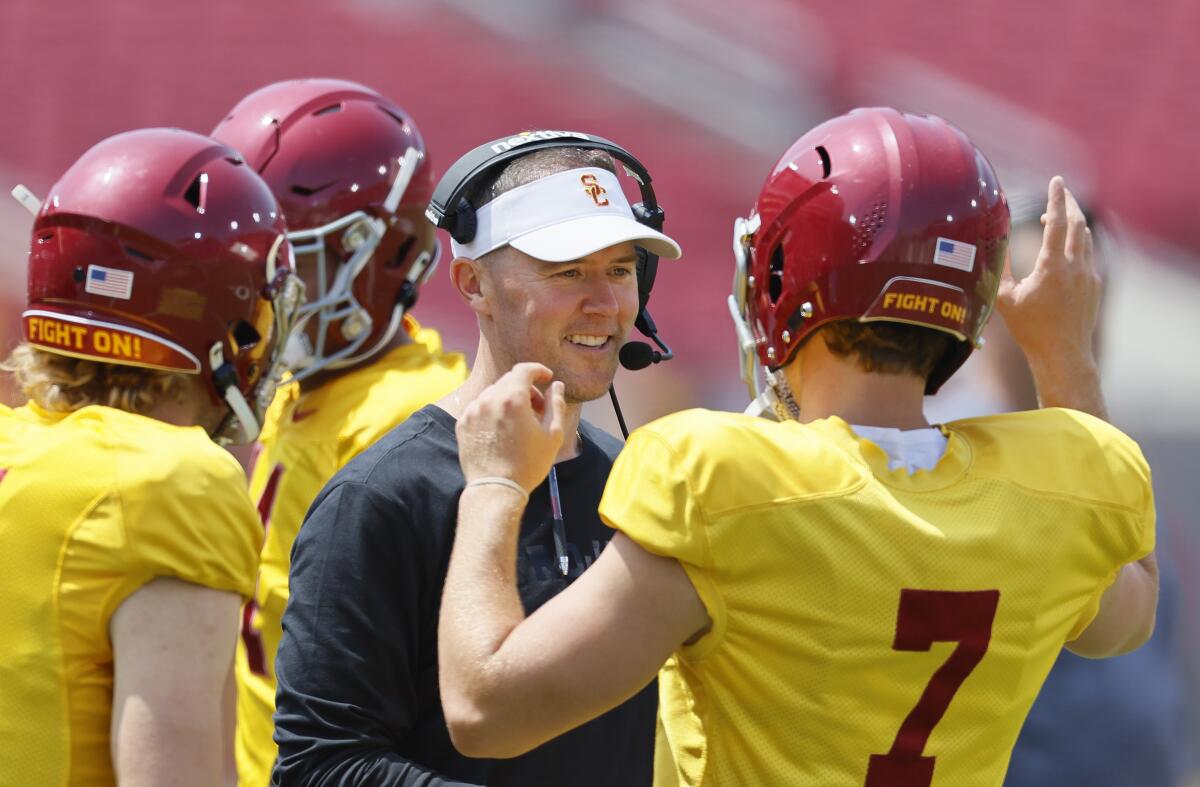
During nine seasons as a head coach, Riley has gone from one Pro Bowl quarterback (Baker Mayfield) to another (Kyler Murray) to another (Jalen Hurts). After that, he had Spencer Rattler, now a third-round rookie with the Saints, and Caleb Williams, his third Heisman winner and the No. 1 overall pick of the Bears.
Where Miller Moss fits into that succession plan is still to be determined. But his profile stands in stark contrast to the Riley-coached quarterbacks who came before him, which, one might think, could mean USC’s passing attack could look markedly different with Moss at the helm.
Unlike Williams, who was at his best when making something out of nothing, Moss is at his best when operating on time, within a system. He’s capable of processing his reads quickly, making split-second decisions and getting the ball out accurately. Chances are you’ll hear the word “cerebral” used to describe him often this season.
Nothing goes smoothly for quarterback Miller Moss in USC’s spring game, but Lincoln Riley didn’t see his offense struggling as much as his defense excelling.
Moss knows that he’s not Williams. But that isn’t necessarily a bad thing. For all his talent, Williams freelanced too often last season in an effort to make big plays behind a leaky offensive line. Moss won’t be able to get away with that. Nor will he try.
Within the right framework, Moss should thrive. There’s a reason he threw six touchdowns in the Holiday Bowl. But after just one full game in four years, we may not even know what that looks like yet for Moss, after months of Riley scheming up ways for him to succeed.
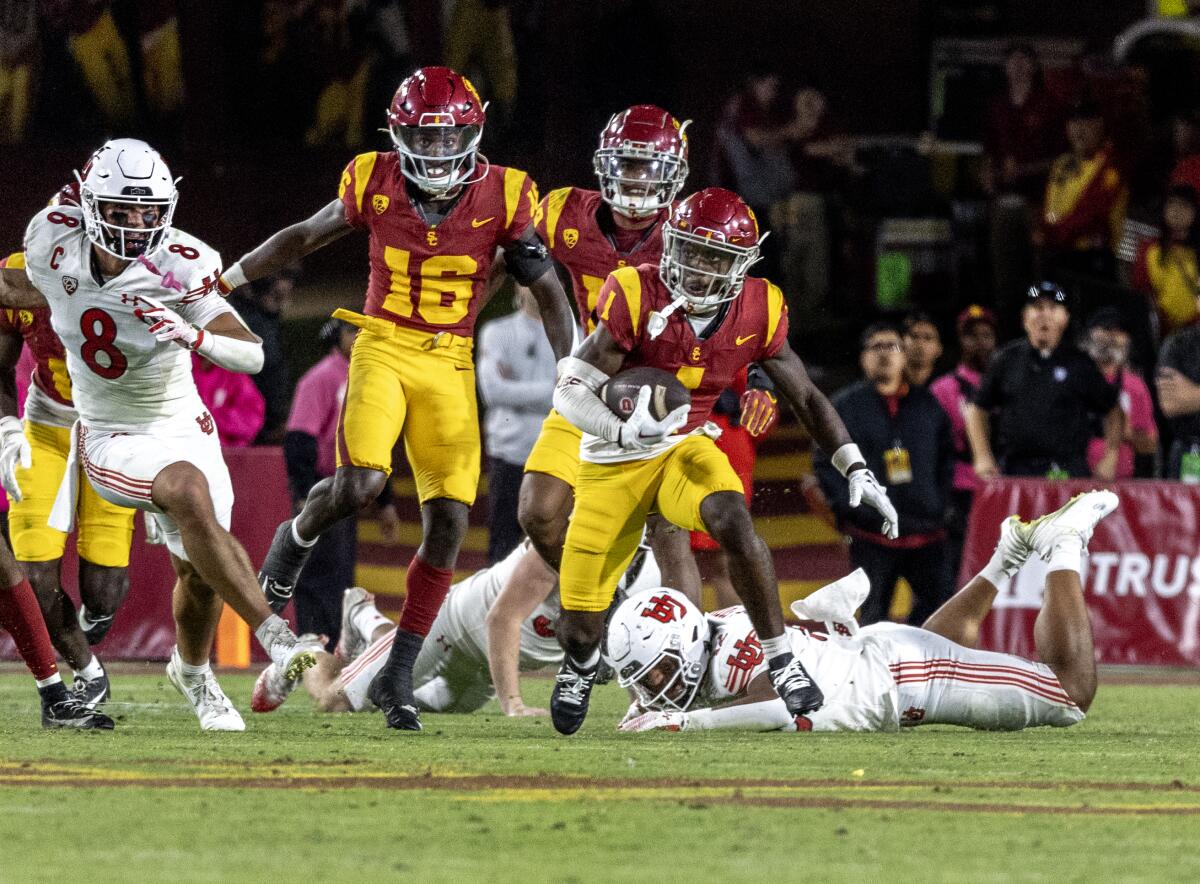
Six of the Trojans’ top 10 receivers from a year ago have since departed, either through the draft or the portal. But even after that exodus, there may not be a position on USC’s roster brimming with more unrealized potential.
Zachariah Branch might’ve been the most electrifying player in college football as a freshman, and that was before he started to focus on the finer points of the position during the offseason. With unmatched speed and elusiveness, he may emerge as the centerpiece of USC’s offensive attack in short order.
“I’m really excited to see how our offense gets creative in getting him the ball,” Moss said.
He’s not the only young receiver who will play a critical role this fall. Six-foot-4 sophomore Ja’Kobi Lane came on strong down the stretch last season and finished with two touchdowns in the Holiday Bowl. Duce Robinson is another mismatch nightmare with deep threat ability at 6-foot-6. Makai Lemon might be the overlooked member of that quartet, but Moss speculated recently that the former top-100 prospect could very well lead the team in targets.
There’s plenty of depth beyond those four, including experienced wideouts like Kyron Hudson and Kyle Ford, who transferred back to USC from UCLA, both of whom should play regular roles. But the progress of the Trojans talented young receivers could ultimately determine where the ceiling is for USC’s offense this season.
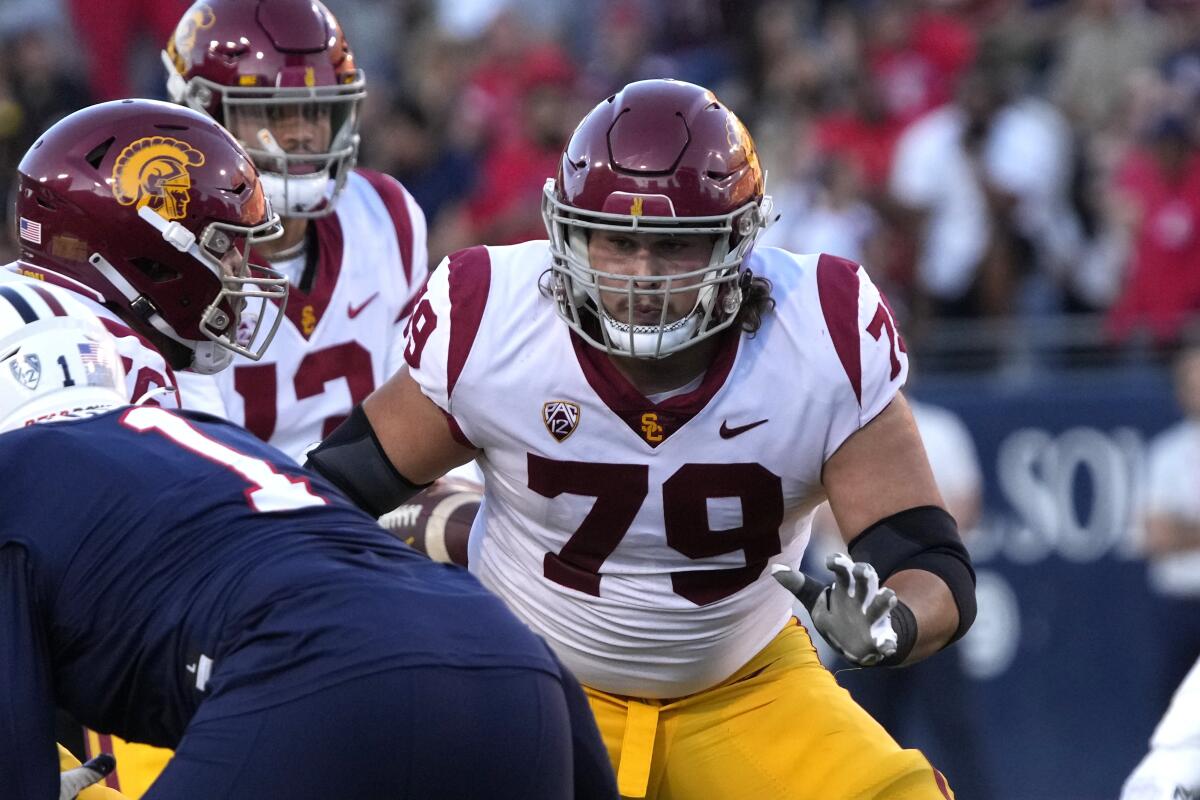
After a frustrating season for its offensive line, USC entered the spring with a chance to add big bodies up front from the transfer portal.
But by the time the portal closed, Riley and his staff hadn’t added a single lineman. Riley, for what it’s worth, says that was by choice.
“I think it’s just a sign for us that we feel like a lot of the players we recruited over the last few years are ready to play,” Riley said. “At some point as a program, you have to decide, do you have enough confidence in the guys you were recruiting and developing? Or are you just going to keep going portal, portal, portal?”
Now is that point for USC’s offensive line, which will enter a much more physical conference with just one proven commodity up front in Jonah Monheim, albeit in a totally different position than last season. Sophomore Elijah Paige will step in at left tackle, while Mason Murphy should be the full-time right tackle in place of Monheim who shifts to center. On the interior, Emmanuel Pregnon has been largely inconsistent at guard, while the other guard spot is completely up for grabs between Alani Noa, Amos Talalele and redshirt senior Gino Quinones.
That’s a lot of uncertainty up front, even before you consider the limited depth behind them.
Go beyond the scoreboard
Get the latest on L.A.'s teams in the daily Sports Report newsletter.
You may occasionally receive promotional content from the Los Angeles Times.